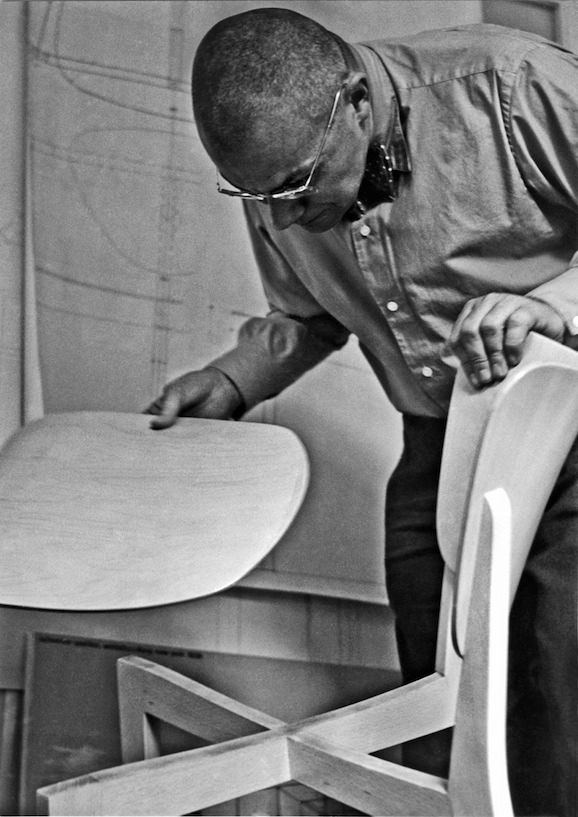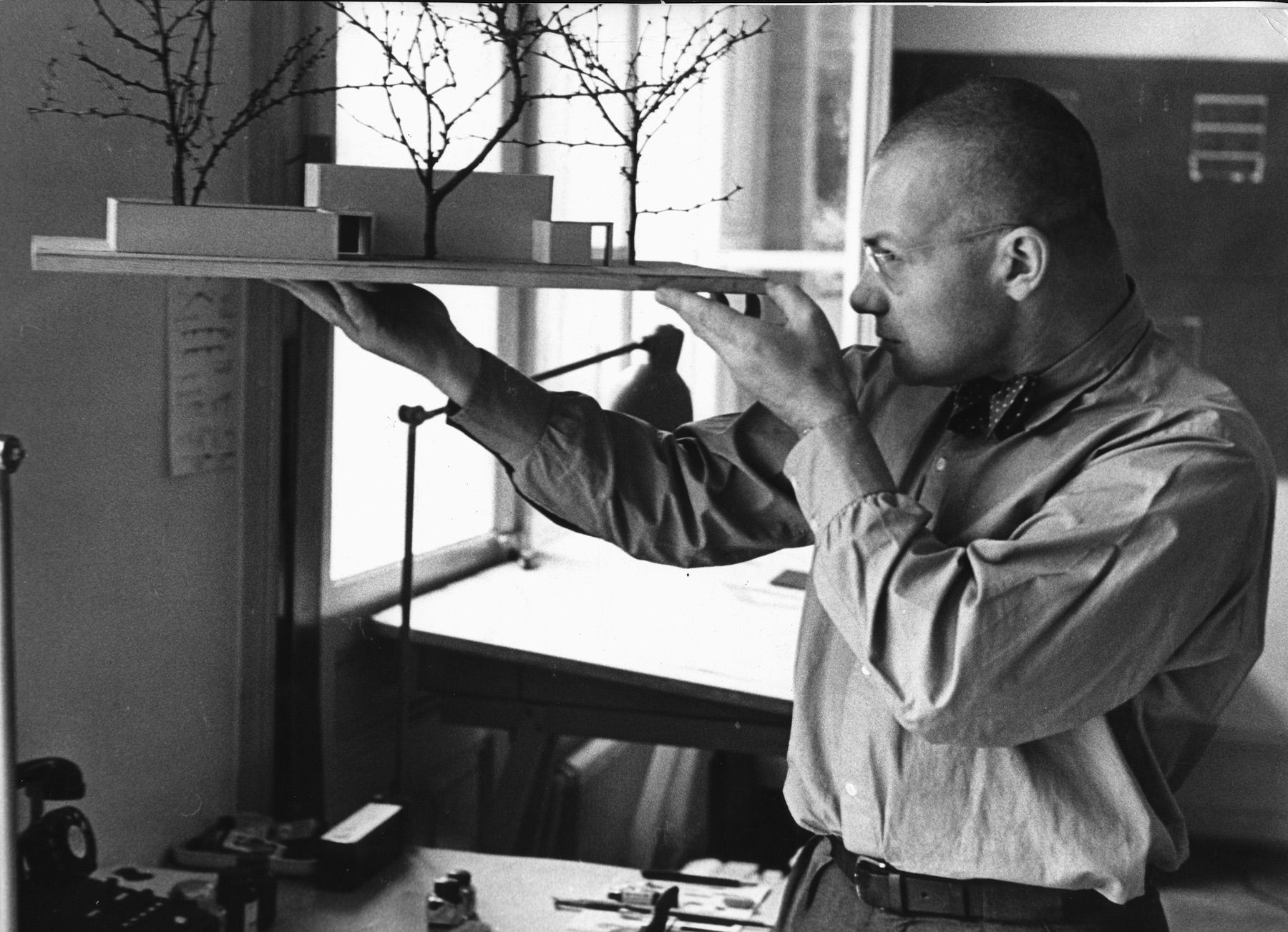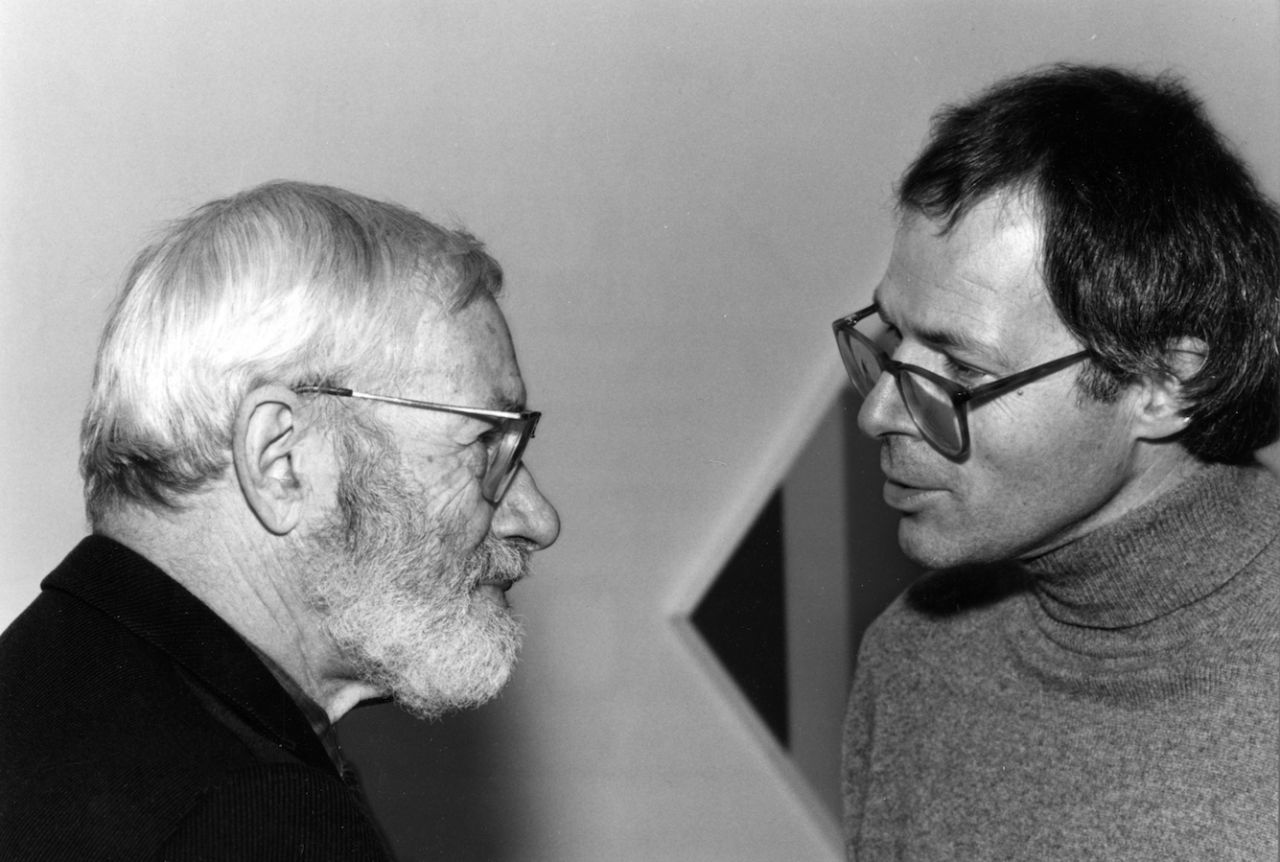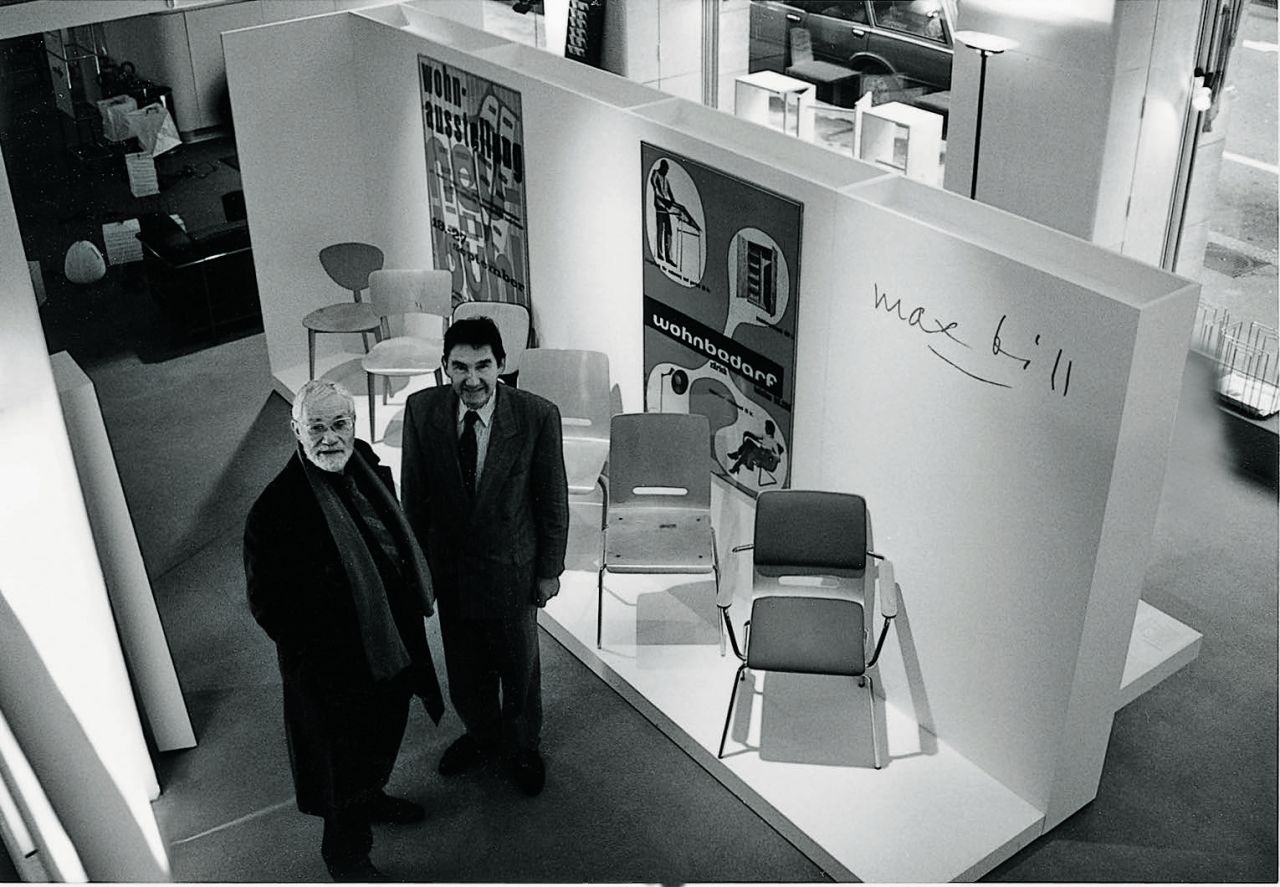max bill
Max Bill was born in 1908 in Winterthur, Switzerland. After graduating from the Zurich School of Applied Arts, in 1928, he started his studies at the Bauhaus in Dessau, where, among others, Paul Klee and Wassily Kandinsky were his teachers. He then returned to Zurich where he worked as a painter, sculptor, graphic designer, publicist and architect.
In 1950, Bill was one of the founders of the Ulm School of Design. He designed the school’s buildings and, until 1956, was the school’s rector. Whether created in his role as architect, artist or designer, many of Max Bill’s objects have become classics. He created countless designs, paintings, sculptures, posters, illustrations and buildings. Max Bill was one of the most important Swiss artists of the 20th century. He died in 1994 in Berlin, aged 85.

Beauty from and as Function
The Max Bill Collection is characterised by clarity, simplicity and mathematical precision.
Max Bill’s wooden furniture is the physical expression of his belief that functionality, as well as the economy of materials and design, should be combined with meeting form-related and aesthetic demands.
Bill’s designs and products are based on qualities such as functionality, longevity and an economic use of resources. For Max Bill, industrial design was of particular importance in the economic upturn during the post-war years and because of the widespread destruction left by the war: he saw industrial design as an opportunity to improve the environment with versatile products. Following the US example, the aesthetics of things were becoming important during this period. For the first time, exemplary products – most of which were ‘anonymous’ factory designs – were given a prominent place in the magazines. Authorities like Max Bill and Siegfried Giedion had a clear attitude: they despised any design that would only serve commercial interests and that, in so doing, would follow fashionable trends, thus fostering a throwaway mentality.
The phrase ‘beauty from and as function’ from Bill’s legendary talk became a key statement. He opened up the rigid notion of functionalism by putting the forms of everyday products into a larger context with the forms of both nature and the arts and by juxtaposing industrially produced everyday products with craft-based and technical objects. His major achievement was his call for a “new beauty ideal”: harking back to Henry van de Velde’s concept of “rational beauty”, which referred to “combining the rationalism of engineering with constructive beauty,” Bill wanted things to not only function but also look beautiful. The idea of an order immanent in form was, throughout his entire life, the hypothesis on which his work was based.





